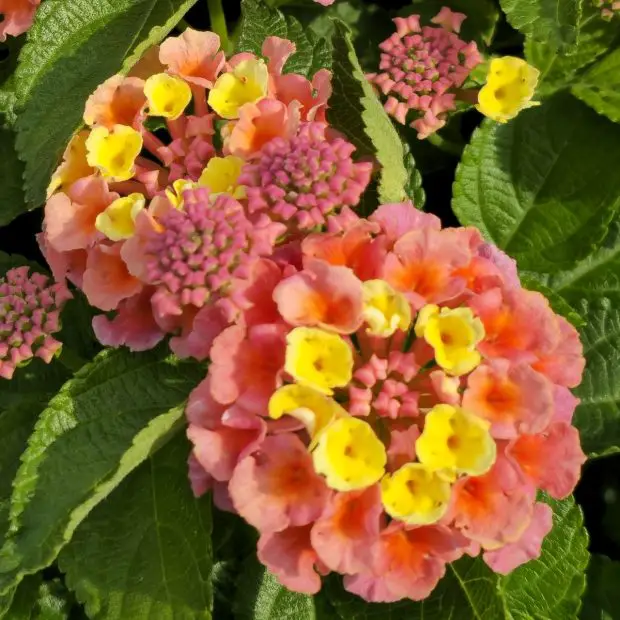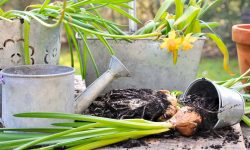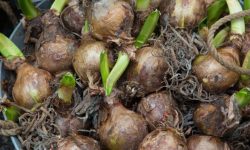Why Propagate Lantana at Home?

Propagating lantana at home offers both practical and personal rewards for gardeners of all skill levels. One of the most compelling reasons is the significant cost savings. Instead of purchasing multiple plants from nurseries each season, you can create new lantanas from an existing healthy specimen—essentially multiplying your garden for free. This is especially valuable if you’re landscaping large spaces, filling in bare spots, or designing pollinator-friendly borders.
Another reason to propagate lantana yourself is to preserve the unique qualities of a specific variety. Many hybrid lantanas feature rare flower colors, compact growth habits, or enhanced resistance to pests and drought. By taking cuttings from a plant you already know thrives in your environment, you ensure your new plants maintain those same desirable traits. In contrast, plants grown from seed may vary in appearance or vigor due to genetic differences.
Propagation also lets you better control the health of your plants from the beginning. Starting with your own materials means you can avoid the potential diseases or pests that sometimes accompany store-bought transplants. For organic gardeners or those who avoid chemical treatments, this is a powerful advantage.
On a deeper level, propagating lantana connects you more intimately with the gardening process. Watching roots form, nurturing young plants, and eventually seeing them flower under your care creates a sense of satisfaction and accomplishment that simply buying a mature plant cannot replicate. Whether you’re a hobbyist, a landscape designer, or a home gardener looking to deepen your skills, propagating lantana offers a simple yet enriching path to a more colorful and rewarding garden.
The Best Time to Propagate Lantana
The ideal time to propagate lantana is during late spring through midsummer, when the plant is actively growing and temperatures are consistently warm. This period offers the best conditions for root development, especially when taking softwood or semi-hardwood cuttings.
For gardeners in USDA Zones 8–11, propagation can begin as early as April and continue through July, depending on local climate. Avoid propagating during the cooler months or during peak heat waves, as extreme temperatures and dormancy can hinder root formation and plant recovery.
If you’re using seeds, start them indoors in late winter or early spring to give seedlings a head start before transplanting outdoors after the last frost. Regardless of method, always choose a time when the parent plant is healthy, not stressed by drought, pests, or pruning, to ensure high success rates.
Choosing Between Seeds and Cuttings
When propagating lantana at home, gardeners typically choose between growing from seeds or using stem cuttings—each with its own advantages and considerations.
Seeds are best for those who want to grow many plants at once or experiment with natural variation. Lantana seeds are relatively easy to germinate with proper warmth and moisture, but the resulting plants may not always resemble the parent, especially if they come from hybrid varieties. This method requires more time and patience, as seedlings take longer to mature and flower.
Cuttings, on the other hand, offer a faster and more predictable route. When you propagate from cuttings, the new plant is a genetic clone of the original, ensuring it retains the same flower color, growth habit, and resilience. Rooting cuttings usually takes just a few weeks with the right humidity and temperature, making it ideal for gardeners who want consistency or quicker results.
Ultimately, your choice depends on your goals. If you’re looking for speed, uniformity, and a higher success rate, stem cuttings are the preferred method. If you enjoy experimenting and don’t mind a longer timeline, growing lantana from seeds can be a rewarding process.
How to Take Lantana Cuttings Correctly
To take lantana cuttings successfully, start by selecting healthy, non-flowering stems from a mature plant during the growing season, ideally in late spring or early summer. Choose stems that are semi-soft—firm but still green and flexible.
Using sterilized pruning shears or a sharp knife, cut a 4- to 6-inch section just below a leaf node, which is where roots are most likely to develop. Remove the lower leaves, keeping only a few at the top to reduce moisture loss. If flowers or buds are present, pinch them off to redirect the plant’s energy toward root growth.
For best results, dip the cut end into rooting hormone powder before placing it in a moist, well-draining propagation mix such as a blend of perlite and peat moss. Keep the cuttings in a warm, bright area with indirect light and high humidity until roots form, which usually takes two to four weeks.
Correct technique at this stage sets the foundation for strong, vigorous new lantana plants.
Preparing the Ideal Growing Medium
Creating the right growing medium is essential for successful lantana propagation, especially when using stem cuttings. The ideal mix should strike a balance between retaining enough moisture to support root formation and draining efficiently to prevent rot. A commonly recommended blend includes equal parts of perlite and peat moss or coco coir. This combination ensures both aeration for the developing roots and a consistent level of moisture without becoming waterlogged.
Before planting your cuttings, lightly moisten the medium until it feels damp to the touch but not soaked. Overly wet soil can lead to fungal problems and root rot, which are common causes of failure during propagation. Avoid using dense garden soil or regular potting mix with added fertilizers at this stage, as those can compact easily or provide too many nutrients too soon, stressing the young cuttings.
It’s also a good idea to use a sterile or fresh propagation mix to minimize the risk of pathogens. If reusing containers, be sure to disinfect them thoroughly with a diluted bleach solution before filling them with the medium. Choose containers that have proper drainage holes to allow excess water to escape. Shallow pots, seed trays, or small nursery cells all work well for starting lantana cuttings in a controlled environment.
By preparing a clean, breathable, and well-balanced medium, you give your lantana cuttings the best possible start, increasing the likelihood of healthy root development and future growth.
Rooting Lantana Cuttings Step by Step
Once your lantana cuttings are prepared and your growing medium is ready, it’s time to begin the rooting process. Success depends on maintaining the right conditions and following a careful sequence that encourages fast, healthy root development.
Start by making a planting hole in the moist growing medium using a pencil or stick to avoid scraping off the rooting hormone when inserting the cutting. Gently place the cutting into the hole, ensuring that at least one node is buried beneath the surface—this is where roots are most likely to emerge. Press the medium lightly around the base to secure the stem without compacting the soil too much.
After planting, place the container in a warm, bright spot with indirect sunlight. Avoid exposing the cuttings to direct sun, which can dry them out quickly. For optimal humidity, cover the container loosely with a clear plastic bag or use a humidity dome, making sure there’s enough airflow to prevent mold. Check regularly to ensure the medium stays evenly moist, but never soggy.
Rooting usually takes two to four weeks, depending on temperature and humidity levels. During this time, avoid disturbing the cuttings. You can gently tug on one after two weeks to check for resistance—a sign that roots are forming. Once the roots are well established and new growth appears, remove the plastic cover and begin acclimating the young plants to normal conditions.
Following each step with care gives your lantana cuttings a strong start and sets them up to become vigorous, blooming plants in your garden.
Transplanting Rooted Cuttings into the Garden
Once your lantana cuttings have developed strong roots—typically after three to four weeks—it’s time to transplant them into the garden. Timing is crucial for a smooth transition. Wait until all risk of frost has passed and nighttime temperatures consistently stay above 60°F (15°C). This ensures the young plants won’t be shocked by cold soil or air.
Begin by hardening off the rooted cuttings. Gradually expose them to outdoor conditions over 7 to 10 days by placing them outside for a few hours each day, increasing sunlight and air exposure incrementally. This step helps strengthen the plant’s structure and improves its resilience once planted in the ground.
Choose a sunny spot with well-draining soil, as lantana thrives in full sun and doesn’t tolerate soggy conditions. Dig a hole slightly larger than the root ball of the cutting, and carefully remove the plant from its container to avoid damaging delicate new roots. Set it at the same depth it was growing in the pot and gently backfill with soil, pressing lightly to remove air pockets.
Water thoroughly after planting to settle the soil and help the roots adjust. In the first few weeks, keep the soil consistently moist but not overly wet as the plant establishes itself. After that, lantana becomes quite drought-tolerant and low maintenance.
With proper care, your young lantana will soon take root in its new environment, begin to branch out, and produce colorful blooms throughout the growing season.
How to Grow Lantana from Seeds at Home
Growing lantana from seeds at home is a slower but rewarding method, especially if you’re looking to cultivate many plants or explore different varieties. Start by collecting ripe seeds from dried lantana berries or purchasing them from a reputable supplier. Before planting, soak the seeds in warm water for 24 hours to soften the tough outer coating and improve germination rates.
Sow the seeds in a seed-starting mix that is light and well-draining. Press them gently into the surface and cover with a thin layer of soil. Keep the trays or pots in a warm, bright area with temperatures between 70–75°F (21–24°C). Maintain even moisture, and be patient—germination can take two to six weeks.
Once the seedlings have developed several sets of true leaves, they can be transplanted into larger containers or directly into the garden after the danger of frost has passed. With time and care, seed-grown lantana will reward you with the same vivid blooms and resilience as propagated cuttings.
Tips for Increasing Propagation Success
To boost your chances of successfully propagating lantana, start with healthy, disease-free parent plants and take cuttings early in the morning when stems are most hydrated. Always use clean, sharp tools to prevent damage or contamination.
Apply a rooting hormone to the cut end to speed up root formation and reduce the risk of rot. Maintain a warm, humid environment—ideally between 70–80°F (21–27°C)—and keep the growing medium consistently moist but not soggy. Providing indirect light and good airflow helps prevent mold while supporting steady growth.
Be patient and avoid overwatering or disturbing the cuttings too soon. With proper technique and conditions, you’ll significantly improve your propagation success rate and enjoy a thriving collection of lantana plants.
Common Mistakes to Avoid
Even though lantana is generally easy to propagate, several common mistakes can lead to failure if you’re not careful. One of the most frequent errors is using weak or diseased cuttings. Always choose healthy stems from vigorous, non-flowering parts of the plant to ensure the energy is directed toward root development rather than supporting blooms.
Another issue is skipping the rooting hormone. While lantana can root without it, using a hormone significantly improves success rates and reduces the time needed for roots to form. Similarly, placing the cuttings in overly wet or compacted soil can cause stem rot and suffocation. The growing medium should be light, airy, and only slightly moist.
Overexposing cuttings to direct sunlight too soon is also a common mistake. Until roots are established, they need bright but indirect light to avoid drying out or burning. Inconsistent watering—either letting the medium dry out completely or keeping it waterlogged—can also stress or kill the developing cuttings.
Finally, impatience often leads gardeners to disturb the cuttings prematurely. Tugging on stems or transplanting them too early can damage fragile roots. Always check for new growth as a reliable sign that the plant is ready for the next stage. Avoiding these pitfalls can greatly improve your success and lead to a flourishing lantana garden.
Benefits of Propagating Lantana at Home
Frequently Asked Questions About Lantana Propagation
Learning how to propagate lantana at home gives you the freedom to create a thriving, colorful garden with plants you nurtured from the very beginning. With a bit of time, patience, and attention to detail, even beginners can master the art of propagation and enjoy the satisfaction of growing new life from their existing plants. Whether you choose seeds or cuttings, the process is both simple and deeply rewarding.






